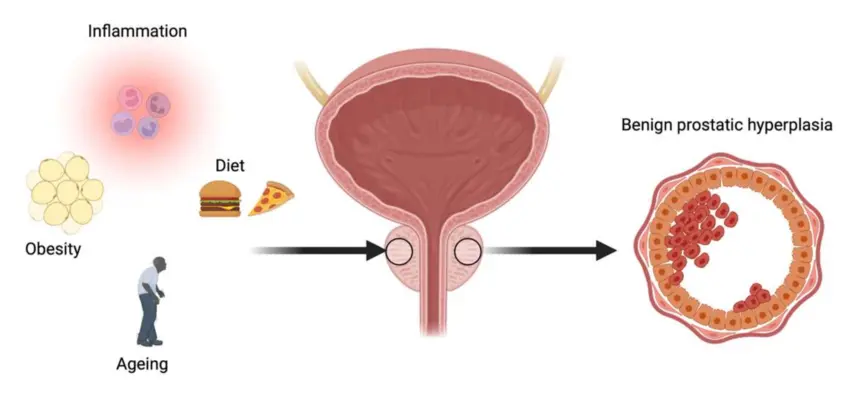The prostate is a small organ about the size of a walnut. It lies below the bladder and surrounds the urethra, the tube that carries urine from the bladder. The prostate makes a fluid that becomes a part of the semen, which is the white fluid that contains sperm.
Prostate problems are common in men older than 50 years. Most can be treated successfully without harming a person's sexual function. A urologist is a doctor most qualified to diagnose and treat many prostate problems.
Non-cancerous Prostate Problems
Acute prostatitis is a bacterial infection of the prostate. It can occur in men at any age. Symptoms include fever, chills and pain in the lower back and between the legs. This problem also can make it hard or painful to urinate. Doctors prescribe antibiotics for acute prostatitis and recommend that the patient drink more liquids.
Chronic prostatitis is a prostate infection that comes back again and again. The symptoms are similar to those of acute prostatitis except that there is usually no fever. Also, the symptoms are usually milder in chronic prostatitis. However, they can last a long time.
Chronic prostatitis is hard to treat. Antibiotics often work when the infection is caused by bacteria. But sometimes no disease causing bacteria can be found. In some cases, it helps to massage the prostate to release fluids. Warm baths also may bring relief. Chronic prostatitis clears up by itself in many cases.
Benign prostatic hypertrophy (BPH) is enlargement of the prostate. This condition is common in older men. More than half of men in their 60's have BPH. Among men in their 70's and 80's, the figure may go as high as 90 percent.
An enlarged prostate may eventually block the urethra and make it hard to urinate. Other common symptoms are dribbling after urination and the urge to urinate often, especially at night. In rare cases, the patient is unable to urinate.
A doctor usually can detect an enlarged prostate by rectal exam. The doctor also may examine the urethra, prostate and bladder using a cytoscope, an instrument that is inserted through the penis.
Prostate Cancer Research
Prostate cancer is one of the most common forms of cancer among Indian men. About 80 percent of all the cases occur in men older than 65 years. In the early stages of prostate cancer, the disease stays in the prostate and is not life threatening. But without treatment, cancer can spread to other parts of the body and eventually cause death. Some 40,000 men die every year from prostate cancer that has spread to other organs.
Diagnosis--To find the cause of prostate symptoms, the doctor takes a careful medical history and performs a physical exam. The physical includes a digital rectal exam, in which the doctor feels the prostate through the rectum. Hard or lumpy areas in the prostate may mean that cancer is present.
Some doctors also recommend a blood test for a substance called prostate specific antigen (PSA). PSA levels may be high in men who have prostate cancer or BPH. However, the test is not always accurate. Researchers are studying changes in PSA levels over time to learn whether the test may someday be useful for early diagnosis of prostate cancer.
If a doctor suspects prostate cancer, he or she may recommend a biopsy. This is a simple surgical procedure in which a small piece of prostate tissue is removed with a needle and examined under a microscope. If the biopsy shows prostate cancer, other tests are done to determine the type of treatment needed.
Protecting Yourself
The best protection against prostate problems is to have regular medical check-ups that include a careful prostate exam. See a doctor promptly if symptoms occur such as a frequent urge to urinate, difficulty in urinating or dribbling of urine.
Regular checkups are important even for men who have had surgery for BPH. BPH surgery does not protect against prostate cancer because only part of the prostate is removed. In all cases, the sooner a doctor finds a problem, the better the chances that treatment will work.
